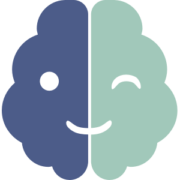This morning I shared a bit of what the learning part of design meant to me in an email, and decided to expand on that.
Working in design means constantly learning. You have to make like a sponge and absorb the field you’re supporting, the user’s language and perspectives, the platform your design is being built with, and so much more. In my career alone I’ve supported users in healthcare SaaS, a social network, several technology companies, shoe retail, a veterinary clinic, an advertising/promotional agency - you get the picture. I’m sure there are agency designers and freelancers with an even more varied set of personas.
Sometimes that can be daunting. Many people in this field suffer from imposter syndrome: the sense that they are faking it, and someone will notice someday. The fact that no one has noticed, and that their work is excellent, doesn’t seem to stop them from this underlying insecurity. I would like to suggest that this is less about actual insecurity, and more about the nature of constantly learning things beyond design in order to perform design.
Go back to childhood. Many people disliked math more than other courses. In large part this is because math never lets you relax or bask in your accomplishments. Instead, the moment you’ve conquered one area, your teacher is using it as a building block for the next area. If you fall behind one unit, you’re lost. Unless you or your teacher are particularly gifted, you begin to resent, consciously or unconsciously, the constant sense of disequilibrium. It’s a rare person who enjoys constantly being a little unsettled.
Design is a bit like that. In every new project, you are learning:
- User goals and context. This can get huge. For a particularly large project at Dell, I once became an entry-level cloud engineer, running instances on multiple cloud platforms, to learn the challenges of my target audience. Admittedly that’s unusual (and you might say a bit overboard), but the design was innovative and I was well recognized for the results.
- Business goals and research.
- Platform and development requirements. Some businesses may even ask you to learn the platform. In my last role I ended up just shy of the Salesforce Trailhead rank of Ranger, their highest level apart from certifications, because Salesforce was the platform and we were expected to be able to work with it.
- The development cycle: Is it Scrum? Lean? Pivotal? kanban? (God help us, is it still waterfall?)
- Tool requirements. Many places let designers use the tools that they personally do best with, but some require all designers to use the same tools for collaboration purposes. Some places even create in-house tools (the outstanding Dell DCX Sherpa tool comes to mind) to allow designers to easily create brand-friendly designs and prototypes.
There’s probably more, but that’s sufficient. Please note that apart from the user goals and design tools, none of this is actual design, though it’s necessary for design. This means that every time a designer steps into a new project, they are either learning or failing (flailing?), and this learning may be constant. So you have to make a choice as a designer: live unsettled and constantly learning, or stop learning and perform mediocre design.
The upshot? Don’t believe yourself when you imagine you’re an imposter designer. It’s true that constant learning means constant humility: you are always going to learn from the person next to you, the next user you talk to, the next job. But all that means is you don’t know everything (gasp!), and you have more to learn. That doesn’t make you an imposter. Rather, humility (that vital self-awareness) makes you the exact opposite: a good designer.
[Cross-posted on LinkedIn, Medium.]

